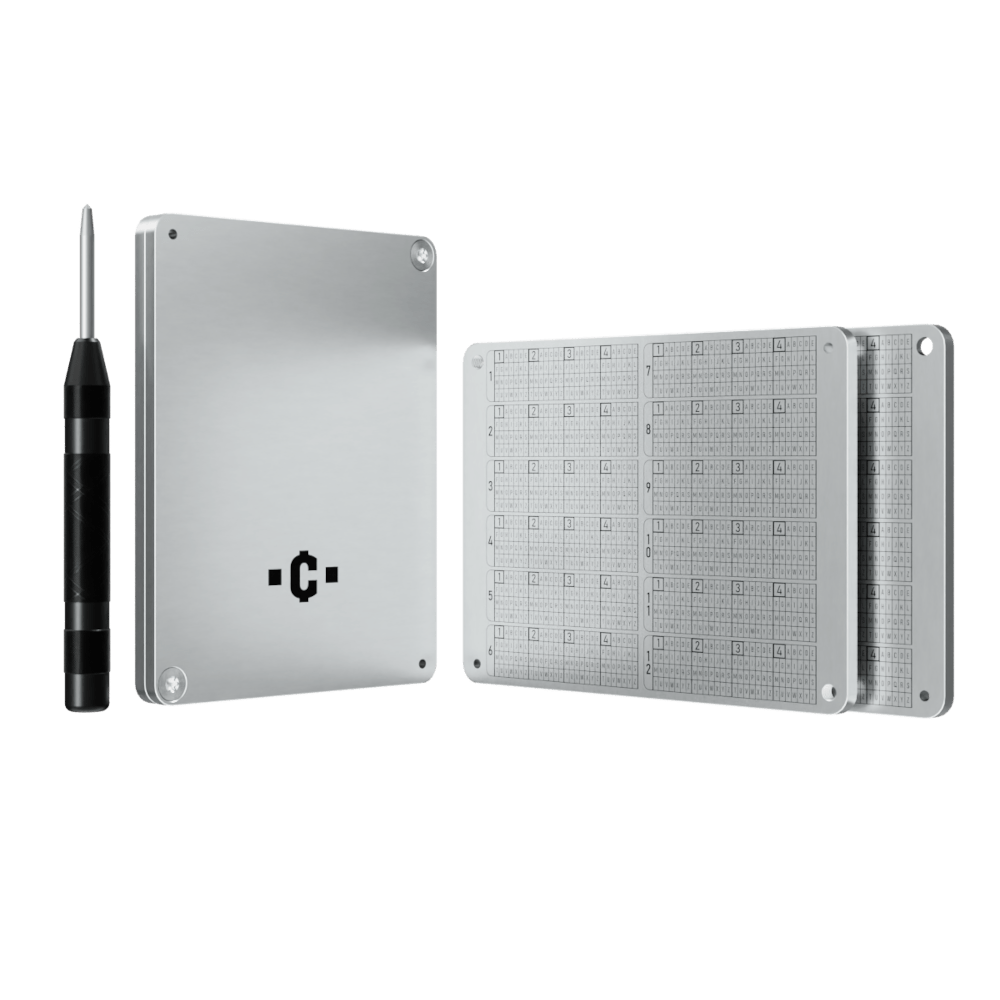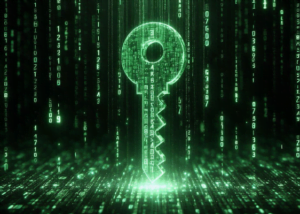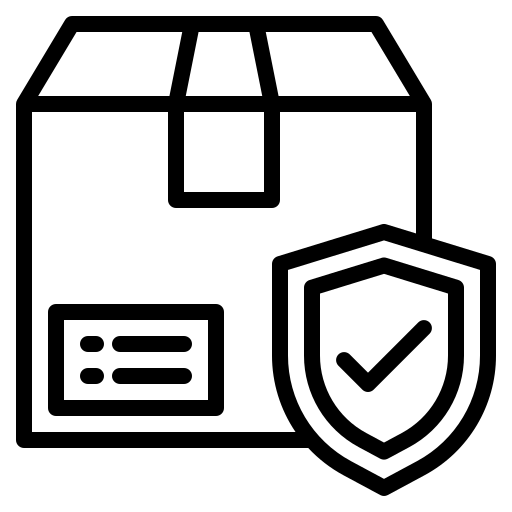Broken Hardware Wallet? How to Recover and Protect Your Crypto
What To Do If Your Hardware Wallet Breaks? First: Don’t panic, you can still recover your funds. Then read this guide and see how.
Introduction
One of the most effective ways to safeguard your cryptocurrencies is by using a hardware wallet. These dedicated devices provide an extra layer of security by storing your private keys offline, making them less vulnerable to hacking attempts and malware.
Hardware wallets are the gold standard for securely storing cryptocurrencies. Unlike software wallets, which are connected to the internet and potentially exposed to online threats, hardware wallets keep your private keys offline in a secure, tamper-proof device. This offline storage, also known as cold storage, significantly reduces the risk of your funds being compromised by hackers or malware.
By keeping your private keys offline, hardware wallets ensure that your cryptocurrencies remain under your control at all times. Even if your computer or mobile device is infected with malware, your funds stored on a hardware wallet will remain safe. Additionally, hardware wallets often feature built-in screens and physical buttons, allowing you to verify and confirm transactions without relying on potentially compromised software.
While hardware wallets provide a high level of security, they are not infallible. Like any electronic device, hardware wallets can malfunction, become damaged, or even be lost or stolen. In such situations, having a proper backup of your wallet’s seed phrase is crucial to ensure that you can recover access to your funds.
It’s important to remember that your hardware wallet is merely a tool for securely storing and accessing your cryptocurrencies. The real key to your funds lies in your wallet’s seed phrase, also known as a recovery phrase or mnemonic phrase. This series of words acts as a backup of your private keys, allowing you to restore access to your cryptocurrencies even if your hardware wallet is lost, stolen, or damaged.
Contents:
- Proper Backup of Seed Phrase is Essential
- Diagnosing the Issue with Your Hardware Wallet
- Recovering Funds from your Wallet with Your Seed Phrase Backup
- Best Practices for Avoiding Hardware Wallet Failures
- Planning Ahead for Inheritance and Disasters
- Conclusion
- Frequently Asked Questions
Proper Backup of Seed Phrase is Essential
What a seed phrase is and how it relates to accessing crypto funds
A seed phrase is a sequence of 12, 18, or 24 words that is generated when you first set up your cryptocurrency wallet. This phrase serves as a human-readable representation of your wallet’s private keys. In essence, your seed phrase is the master key to all the cryptocurrencies stored in your wallet.
When you want to restore access to your wallet, either on a new device or after losing access to your original wallet, you can use your seed phrase to regenerate your private keys and regain control over your funds. This is why properly backing up and securely storing your seed phrase is of utmost importance.
Importance of securely backing up seed phrase separate from hardware wallet
While hardware wallets provide a secure way to store your private keys, it is crucial to keep a backup of your seed phrase separate from the device itself. If your hardware wallet is lost, stolen, or damaged, and you don’t have a backup of your seed phrase, you risk losing access to your cryptocurrencies permanently.
When backing up your seed phrase, it’s essential to choose a method that is both secure and durable. Writing your seed phrase on a piece of paper can be risky, as paper is vulnerable to damage from water, fire, and other environmental factors. Additionally, paper backups can fade over time or be easily misplaced.
Options for durable seed phrase backup
To ensure the long-term security and durability of your seed phrase backup, consider using a more robust solution, such as marking your seed phrase on a metal plate. Products like Coinplate offer a durable and reliable way to store your seed phrase, protecting it from environmental damage and ensuring its longevity.
Metal seed phrase backups are designed to withstand extreme temperatures, water damage, and other potential hazards. By engraving your seed phrase onto a metal plate, you create a permanent, tamper-proof record of your wallet’s master key, which can be securely stored and accessed when needed.
Coinplate’s experience and consequences of improper backups
As a Coinplate team, we have seen firsthand the consequences of improper seed phrase backups. Many cryptocurrency users have lost access to their funds due to damaged, lost, or stolen paper backups. In some cases, users have even fallen victim to scams or phishing attempts, inadvertently sharing their seed phrases with malicious actors.
By creating Coinplate, we aimed to provide a secure, durable, and user-friendly solution for storing seed phrases. Our experience in the industry has shown us the importance of educating users about the risks associated with improper seed phrase management and the need for reliable backup solutions.
While hardware wallets offer a high level of security for storing cryptocurrencies, it is equally important to prioritize the proper backup and storage of your wallet’s seed phrase. By using a durable solution like Coinplate to store your seed phrase, you can ensure that your funds remain accessible even in the face of hardware wallet failures or other unforeseen circumstances.
Diagnosing the Issue with Your Hardware Wallet
Despite the robust security and reliability of hardware wallets, they are not immune to issues or failures. As with any electronic device, hardware wallets can experience various problems that may prevent you from accessing your cryptocurrencies. In this section, we’ll discuss common types of hardware wallet failures and how to diagnose the issue at hand.
Common types of hardware wallet failures (broken screen, water damage, etc.)
Hardware wallets can experience several types of failures, ranging from physical damage to software malfunctions. Some of the most common issues include:
- Broken or malfunctioning screen: If your hardware wallet’s screen is cracked, damaged, or not displaying information correctly, it can make it difficult or impossible to view your wallet’s status or confirm transactions.
- Water damage: Although some hardware wallets are designed to be water-resistant, excessive exposure to moisture or liquids can cause damage to the device’s internal components, leading to malfunction or failure.
- Physical damage: Hardware wallets can be damaged by physical impact, such as being dropped or crushed, which may result in a malfunctioning device or loss of data.
- Battery issues: Some hardware wallets feature built-in batteries, which can degrade over time or experience faults, leading to unexpected shutdowns or inability to turn on the device. The device could still work correctly after being plugged into a power source or computer.
- Firmware or software malfunctions: In rare cases, hardware wallets may experience issues related to their firmware or software, such as freezing, glitches, or unresponsive buttons.
The action path in each scenario will be different, so it’s important to first try to find the cause of the device failure. In some of those cases, it might be still possible to access the funds and move them to a new wallet.
Determining if it’s a true device failure vs a user error like a forgotten PIN
When encountering an issue with your hardware wallet, it’s essential to determine whether the problem stems from a true device failure or is just a user error. One common user error is forgetting the PIN code required to access the wallet. Most hardware wallets have built-in security measures that prevent brute-force attempts to guess the PIN, often resulting in a locked device after several incorrect entries. It is usually enough to have just three wrong attempts to completely lock and erase your hardware wallet.
If you find yourself locked out of your hardware wallet due to a forgotten PIN, don’t panic. Most hardware wallets have a failsafe mechanism that allows you to reset the device using your seed phrase. By entering your seed phrase, you can regain access to your wallet and set a new PIN. However, it’s crucial to ensure that you have a secure backup of your seed phrase before attempting this process. We always recommend using hardware wallets that use industry-standard backups like BIP39 seed phrases, to make recovery easier and possible even with wallet from different brand. See the list of Bip39 compatible wallets.
Contacting manufacturer’s support as a first step if unsure
If you are unsure whether the issue with your hardware wallet is due to a true device failure or a user error, it’s always a good idea to contact the manufacturer’s support team as a first step. Most hardware wallet manufacturers offer dedicated customer support channels, such as email, live chat, or phone support, to assist users with troubleshooting and resolving issues.
When contacting the manufacturer’s support, be prepared to provide details about your device, such as the model, firmware version, and a clear description of the problem you are experiencing. The support team may ask you to perform specific troubleshooting steps or provide additional information to help diagnose the issue.
It’s important to remember that, while manufacturer support can be helpful in resolving issues with your hardware wallet, they will never ask for your seed phrase or private keys. If you are asked to provide this information, it is likely a scam, and you should not comply.
In the event that your hardware wallet is indeed experiencing a true device failure, the manufacturer’s support team will guide you through the process of arranging for a repair or replacement, if applicable. Some manufacturers offer limited warranties that cover device failures, so be sure to review the terms and conditions of your specific hardware wallet.
By understanding the common types of hardware wallet failures, determining whether an issue is due to a true device failure or user error, and knowing when to contact the manufacturer’s support, you can take the first steps towards resolving any problems that may arise with your hardware wallet. In the next section, we’ll discuss how to recover your funds using your seed phrase backup in case of a hardware wallet failure.
Recovering Funds from your Wallet with Your Seed Phrase Backup
In the event that your hardware wallet experiences a failure or you lose access to it, your seed phrase backup becomes the key to recovering your funds. This section will guide you through the process of using your seed phrase to restore access to your cryptocurrencies and securely transferring them to a new wallet.
Using seed phrase with a software wallet as a temporary measure
If you need to access your funds quickly and cannot wait for a replacement hardware wallet, you can use your seed phrase to restore your wallet using a software wallet as a temporary measure. Most reputable software wallets, such as MyEtherWallet, Electrum, or Exodus, allow you to import your wallet using your seed phrase. Make sure that the wallet supports the type of seed phrase you have. You can also check our list of BIP39 compatible software wallets.
To do this, follow these general steps:
- Download and install a reputable software wallet that supports the cryptocurrencies you hold and your seed phrase type.
- Look for an option to restore or import a wallet using a seed phrase.
- Carefully enter your seed phrase, double-checking each word for accuracy.
- Once your wallet is restored, you should see your cryptocurrency balances and transaction history.
It’s crucial to remember that using a software wallet, even temporarily, exposes your funds to a higher risk of hacking or malware compared to using a hardware wallet. Typing your seed phrase on a computer or other electronic device could potentially expose it to hackers. Therefore, it’s essential to use a trusted and secure device when restoring your wallet with a software wallet.
Ordering a new hardware wallet and restoring from seed phrase
If your hardware wallet has experienced a failure or you have lost access to it, it’s recommended to order a new hardware wallet from a reputable manufacturer as soon as possible. Make sure it is compatible with your seed phrase type and the cryptocurrencies you own. Most secure hardware wallets allow typing the seed phrase directly on the device, which avoids the risks coming from typing it on pc or smartphone.
Once you receive your new hardware wallet, you can use your seed phrase backup to restore access to your funds on the new device. The process of restoring your wallet on a new hardware device may vary slightly depending on the manufacturer, but generally, it involves the following steps:
- Set up your new hardware wallet according to the manufacturer’s instructions.
- Look for an option to restore a wallet from a seed phrase.
- Carefully enter your seed phrase, double-checking each word for accuracy.
- Once your wallet is restored, verify that your cryptocurrency balances and transaction history are accurate.
By restoring your wallet on a new hardware device using your seed phrase backup, you can regain secure, offline access to your funds.
Importance of never entering seed phrase on a computer or phone
When restoring your wallet using a seed phrase, it is of utmost importance to never enter your seed phrase on a computer or phone that is connected to the internet. Entering your seed phrase on an internet-connected device exposes your funds to potential hacking attempts or malware that could steal your seed phrase and, consequently, your cryptocurrencies.
Always enter your seed phrase directly on your hardware wallet or a trusted, offline device. If you must use a software wallet temporarily, ensure that the device you are using is free from malware and not connected to the internet when entering your seed phrase.
Verifying receiving address matches before transferring funds
After restoring your wallet on a new device, whether it’s a hardware wallet or a temporary software wallet, it’s crucial to verify that the receiving addresses match your original wallet before transferring any funds.
To do this, compare the receiving addresses generated by your new wallet with the addresses from your original wallet. You can do this by cross-referencing the addresses with your transaction history or by comparing them with any saved records you may have kept. This step ensures that you are sending your funds to the correct wallet and not to an address controlled by a malicious actor.
Once you have verified that the receiving addresses match, you can safely transfer your funds from your temporary software wallet to your new hardware wallet, ensuring that your cryptocurrencies are once again secured in offline storage. We advise to first make a test transfer to make sure you received it, especially with bigger sums.
By following these steps and prioritizing the security of your seed phrase, you can successfully recover your funds in the event of a hardware wallet failure and restore secure access to your cryptocurrencies.
Best Practices for Avoiding Hardware Wallet Failures
While it’s essential to know how to recover your funds in the event of a hardware wallet failure, it’s equally important to take proactive steps to minimize the risk of such failures occurring in the first place. In this section, we’ll discuss best practices for avoiding hardware wallet failures, drawing on our experience as manufacturers of Coinplate.
Proper care and storage of hardware wallets
One of the most effective ways to prevent hardware wallet failures is to ensure that your device is properly cared for and stored. Here are some tips to keep in mind:
- Store your hardware wallet in a cool, dry place: Exposure to extreme temperatures, humidity, or moisture can damage your hardware wallet’s internal components, leading to malfunctions or failures. This is why keeping a hardware wallet in a car might not be the best idea.
- Keep your hardware wallet away from direct sunlight: Prolonged exposure to direct sunlight can cause overheating and damage to your device’s screen or internal components.
- Use a protective case: Investing in a protective case for your hardware wallet can help prevent physical damage from drops, impacts, or scratches.
- Handle your hardware wallet with care: When using your hardware wallet, be gentle with the buttons and ports to avoid causing any physical damage.
- Extra tip – keep a second hardware wallet: It will allow you to access your funds even if the primary wallet fails. It will also create another layer of security if your seed phrase is lost – in that case, your hardware wallets are your only hope.
By following these simple guidelines, you can help extend the lifespan of your hardware wallet and reduce the risk of device failures.
Having redundant seed phrase backups in secure locations
In addition to properly caring for your hardware wallet, it’s crucial to have redundant backups of your seed phrase stored in secure locations. While having a single backup of your seed phrase is essential, creating multiple backups can provide an extra layer of protection in case one backup is lost, damaged, or destroyed.
When creating redundant backups, consider the following:
- Use durable materials: As mentioned earlier, products like Coinplate offer a durable and reliable way to store your seed phrase by engraving it on stainless steel plate. Consider creating multiple metal backups for added redundancy.
- Store backups in different locations: Keep your redundant backups in separate, secure locations to minimize the risk of losing all backups due to a single event, such as a fire, flood, or theft. Make sure though that these locations are secure and you can check them from time to time.
- Consider using a passphrase to secure your seed phrases: the passphrase will act as an extra layer of security for your seed phrase backups. Even if someone finds your seed phrase, it will be worthless without the passphrase. Before using a passphrase be sure to understand how it works thoroughly to avoid irreversible fund loss.
By having multiple, secure backups of your seed phrase, you can ensure that you always have a way to recover your funds, even if one backup is compromised or lost.
Periodic verification that backups are accessible and intact
Over time, it’s essential to periodically verify that your seed phrase backups are accessible and intact. This involves checking that your backups are still in their secure locations and that they have not been damaged or tampered with.
If you have created metal backups using products like Coinplate, inspect them for any signs of corrosion, scratches, or other damage that may affect the readability of your seed phrase. Placing the tamper-evident stickers on the backups is always a good idea – that’s why you will find them in your Coinplate set.
If you have digital backups (which we don’t recommend), verify that the files are still accessible and that the encryption or password protection is still in place.
By regularly verifying the integrity of your seed phrase backups, you can catch any potential issues early on and take steps to address them before they become a problem.
Guidance from our experience with Coinplate customers
As manufacturers of Coinplate, we have had the opportunity to interact with numerous customers and learn from their experiences. One of the most common issues we have encountered is customers not fully understanding the importance of proper seed phrase management and storage.
Many users tend to focus solely on the security of their hardware wallet, neglecting the crucial role that seed phrase backups play in protecting their funds. We have seen cases where customers have lost access to their cryptocurrencies due to lost, damaged, or improperly stored seed phrase backups. It happens most often because of locked wallets due to wrong PIN attempts – it is actually quite easy to input it wrong due to small buttons and little screens. Not to mention confusing your wallet PIN with card or phone PINs. This is the moment when most people realise they don’t have a solid seed phrase backup.
To help our customers avoid these pitfalls, we always emphasize the following:
- Educate yourself: Take the time to understand how your hardware wallet works, the importance of your seed phrase, and the best practices for securing your funds.
- Prioritize seed phrase backups: Treat your seed phrase backups with at least the same level of importance as your hardware wallet. Ensure that you have multiple, durable backups stored in secure locations.
- Verify and test your backups: Periodically verify that your seed phrase backups are accessible and intact, and test your recovery process to ensure that you know how to restore your wallet if needed. You might be able to use a recovery check feature of your wallet to check your seed without the need to reset your wallet.
By following these guidelines and learning from the experiences of others, you can significantly reduce the risk of losing access to your funds due to hardware wallet failures or seed phrase mismanagement.
Planning Ahead for Inheritance and Disasters
While securing your cryptocurrencies during your lifetime is crucial, it’s also essential to plan for the future and consider scenarios such as inheritance and natural disasters. By taking proactive steps to prepare for these situations, you can ensure that your funds remain accessible to your loved ones and protected against unforeseen events.
Importance of sharing backup and access info with trusted family
One of the most important aspects of planning for the future is ensuring that your loved ones can access your cryptocurrencies in the event of your death or incapacitation. This involves sharing information about your hardware wallet, seed phrase backups, and any other relevant access information with a trusted family member or friend.
By proactively sharing access information with a trusted family member or friend, you can have peace of mind knowing that your funds will be accessible to your loved ones in the event of your absence.
Using multi-signature setups for shared control
Another option for planning for inheritance and shared control is to use a multi-signature setup for your cryptocurrency wallet. Multi-signature wallets require multiple parties to sign off on transactions, providing an added layer of security and shared responsibility.
This solution requires a deep knowledge of the setup and is advised only to advanced users with large portfolios. This is why we won’t cover this topic in depth in this article.
Disaster-proof backups able to withstand fire, flooding, etc.
In addition to planning for inheritance, it’s crucial to consider the potential impact of natural disasters on your cryptocurrency holdings. Events such as fires, floods, or earthquakes can destroy hardware wallets and seed phrase backups, making it essential to have disaster-proof seed phrase storage strategy.
One of the most effective ways to create disaster-proof backups is to use durable, fire-resistant, and waterproof backups like those offered by Coinplate. By marking your seed phrase onto a metal plates designed to withstand extreme conditions, you can ensure that your backup remains intact and accessible even in the face of a disaster.
When creating disaster-proof backups, consider the following:
- Choose appropriate materials: Select materials that are specifically designed to withstand high temperatures, water damage, physical impact and other potential hazards.
- Store backups in secure, geographically dispersed locations: Keep your disaster-proof backups in multiple, secure locations that are geographically separated to minimize the risk of a single event destroying all of your backups.
- Regularly check the condition of your backups: Periodically inspect your disaster-proof backups to ensure that they remain in good condition and have not been compromised by any environmental factors.
By implementing disaster-proof backup solutions and regularly monitoring their condition, you can have confidence that your seed phrase and, by extension, your cryptocurrency funds will remain secure and accessible even in the face of unforeseen events.

Coinplate Alpha
Coinplate Alpha is the ultimate steel crypto wallet. Our best and easiest to use solution to secure your seed phrase. It’s an ultimate seed phrase storage solution.
Ultra thick stainless steel sandwich to protect your seed phrase. No tools needed, center punch included.
100% Stainless Steel
Fireproof • Hackerproof • Ultra Durable
Save with value packs: 3 and 5pcs packs available.
Conclusion
While hardware wallets provide a robust and secure way to store your cryptocurrencies, they are not immune to failures or loss. By understanding the importance of seed phrase backups and implementing best practices for their secure storage and management, you can protect your funds and ensure that they remain accessible even in the face of hardware wallet failures or other unforeseen events.
By implementing the strategies and best practices outlined in this article, you can significantly reduce the risk of losing access to your cryptocurrencies due to hardware wallet failures, seed phrase mismanagement, or other potential hazards. The peace of mind that comes from knowing that you have taken proactive steps to secure your digital assets is invaluable, allowing you to confidently navigate the exciting and ever-changing world of cryptocurrencies.
If you haven’t already, we strongly encourage you to take action today and create a durable seed phrase backup using a reliable and proven solution like Coinplate. By doing so, you can rest assured that your cryptocurrencies will remain secure and accessible, no matter what challenges the future may bring. Don’t wait until it’s too late.
At Coinplate, we are committed to providing our customers with the tools and knowledge they need to safeguard their digital assets. Our experience in the industry has shown us the critical importance of proper seed phrase management, and we have designed our products with the highest standards of durability, security, and ease of use in mind. Have any questions? Don’t hesitate to contact us, we will be delighted to help.
FAQs
1. What happens if I lose my hardware wallet seed phrase backup?
If you lose your seed phrase backup, you risk losing access to your cryptocurrencies permanently. Without a backup, you won’t be able to recover your funds if your hardware wallet is lost, stolen, or damaged. In that case, your hardware wallet will be your only hope for accessing the funds and moving them to a new wallet with a new seed phrase. Always create multiple, durable backups and store them in secure, separate locations.
2. Are seed phrases compatible across different hardware wallet brands?
In most cases, yes, as long as the wallets use the same seed phrase standard (e.g., BIP39). However, always verify compatibility with the manufacturer’s documentation or support team before restoring your wallet on a different device. Some hardware wallets use their own backup standard and it might not be possible to use a different wallet for recovery. Get yourself familiar also with the concept of derivation path and differences between private keys and seed phrases.
3. How can I test my seed phrase backup without exposing it to risks?
Some hardware wallets like Ledger also have a seed phrase check feature built in, which allows you to input your seed phrase and check if it’s the same as used by the wallet, without the need to reset your wallet.
Otherwise, use a spare hardware wallet or an offline software wallet to restore your wallet using your seed phrase. Verify that your balances and transaction history are accurate, then reset the spare wallet or securely erase the software wallet. This allows you to test your backup without exposing it to online risks.
4. What should I do if I suspect my seed phrase has been compromised?
Immediately move your funds to a new, secure wallet with a new seed phrase. Investigate how the compromise may have occurred, such as scanning for malware or checking for physical tampering. Address the issue and take steps to prevent future breaches. Check our guide on what to do if your seed phrase is compromised.
5. How often should I check on my hardware wallet and seed phrase backup?
Check your hardware wallet and seed phrase backups at least once every few months. Verify that your hardware wallet is functioning properly and that your backups are intact and accessible. Regular checks help you identify and address potential issues early on.













